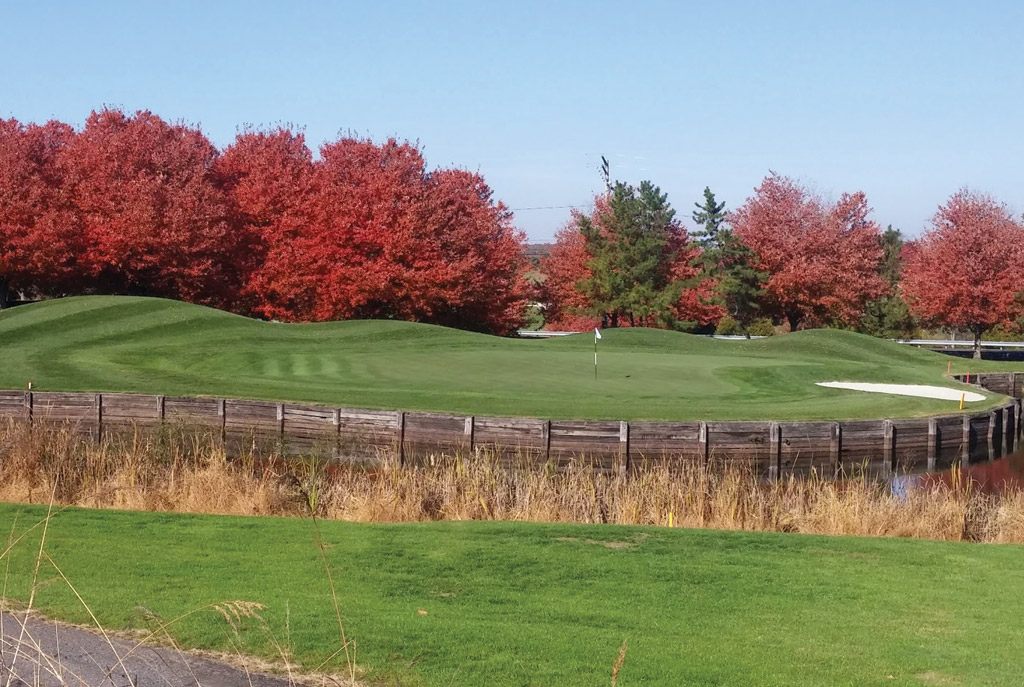Application equipment must apply the pesticide to the intended target at the proper rate. Information on the label specifies the legal application rate and sometimes suggests the appropriate equipment for use with the product. While different kinds of application equipment are available, nearly 90% of all pesticides are formulated for spraying. The size of the equipment (tank size, boom width, etc.) should be matched to the scale of the facility. Nozzle selection and coverage, in particular, is important in the control of drift. The type of nozzle, nozzle orifice size, sprayer pressure, and the height or distance of the nozzles […]
[…]requirements as described previously under Regulatory Considerations section. For more information on pesticide storage and handling in Maryland see the following: Pesticide Information Leaflet No. 39: Pesticide Storage and Security. 2012. University of Maryland. Chapter 8 “Transportation, Storage, and Security.” Maryland Pesticide Applicator Core Manual. pp. 124-135. Pesticide Information Leaflet No. 35: Synopsis of the Maryland Pesticide Applicators Law and Regulations. 2012. University of Maryland. Best Management Practices Maintain an inventory of all pesticides used and the SDS for each chemical. Avoid purchasing large quantities of pesticides that require storage for greater than six months. Adopt the “first in–first out” principle, […]
[…]construction phase of any industry’s infrastructure poses the greatest risk of ecosystem alteration. With proper planning and design, golf facilities can be constructed and maintained with minimal impact on water quality and other natural resources. Additional information about incorporating water quality protections into the planning and design phase is found in the “Surface Water Management” and “Maintenance Operations” sections. Next: Regulatory […]
[…]the facility, the data must meet QA/QC standards to be defensible as evidence. For more information on developing a water quality monitoring program and for an example water quality monitoring report, see Appendix A in Environmental Best Management Practices for Virginia’s Golf Courses. 2012. Virginia Golf Course Superintendent Association (VGCSA). Best Management Practices Prior to construction, establish baseline water quality levels. A seasonal sampling program (four samples per year) is recommended. Semi-annual testing is acceptable once baseline data is established. Identify appropriate sampling locations and sample at the same locations. Follow recommended sample collection and analytical procedures. Implement corrective procedures […]
[…]larger issues if the system requires frequent repairs and determining the cause of failures. For example, pipe failures may be caused not only by material failure, but also by problems with the pump station; wiring problems may be caused by corrosion, rodent damage, or frequent lightning or power surges; and control tubing problems can result from poor filtration. Best Management Practices Document equipment run-time hours. Document and periodically review the condition of infrastructure, such as pipes, wires, and fittings. Follow the manufacturer’s recommendations for system checks and routine maintenance. Routinely inspect the system for proper operation by checking computer logs […]
[…]to the sustainability of agriculture. The University of Maryland Extension provides information on the basics of pollinators. Because pesticides are designed to control pests, their use can potentially impact non-target species. Therefore, pesticide applicators, including those on golf courses, need to be mindful of the impact that pesticides have on pollinator species and their habitat. Next: Regulatory […]
[…]nozzles. Minimize the use of detergents and use only biodegradable non-phosphate detergents. Use non-containment washwater for field irrigation. Do not discharge non-contaminated wastewater during or immediately after a rainstorm, since the added flow may cause the permitted storage volume of the stormwater system to be exceeded. Do not discharge washwater to surface water or groundwater either directly or indirectly through ditches, storm drains, or canals. Never discharge to a sanitary sewer system without written permission from the utility. Never discharge to a septic tank. Do not wash equipment used to apply pesticides on pads with oil/water separators. Do not wash […]
[…]progress report and communicate the report to the proper permitting agencies. Temporary construction compounds should be sited and built in a way that minimizes environmental impacts. Next: […]
[…]track successes and failures. Best Management Practices Monitor prevailing environmental conditions for their potential impact on pest problems. Train personnel how to regularly monitor pests by scouting or trapping. Identify alternative hosts and overwintering sites for key pests. Correctly identify the specific disease, weed, and/or insect problem to ensure appropriate control measures. Assess pest damage when it occurs, noting particular problem areas, such as the edges of fairways, shady areas, or poorly drained areas. Document when the damage occurred. Note the time of day, date, and flowering stages of nearby plants. Map pest outbreak locations to identify patterns and susceptible […]
Plant tissue analysis can provide additional information on the nutritional status of a turfgrass stand when used in conjunction with soil testing. While soil tests indicate the level of available essential nutrients in the soil, they do not indicate what the plant has actually taken up. Analysis of turfgrass tissue samples indicates the level of macro and micronutrients actually in the plant. However, low tissue levels of a given plant nutrient may not indicate a lack of nutrient availability but rather an abiotic problem, such as stress, or a biotic problem, such as a root pathogen, that reduces or inhibits […]

